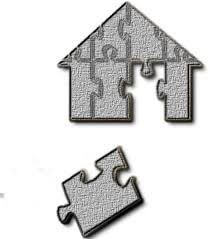
Passive Activity Loss and the Income Tax Puzzle for Real Estate Professionals
Does being a real estate professional have income tax advantages?
 It all comes down to passive and non-passive activities related to property.
It all comes down to passive and non-passive activities related to property.
As discussed in a previous post, the IRS recognizes two types of passive activities as they relate to investment real estate, one of those being “trade or business in which the taxpayer does not materially participate.” The other passive activity being rentals, including both equipment and rental real estate.
Generally, rental real estate activities are passive regardless of one’s participation but there is an exception for real estate professionals.
For most taxpayers, income and loss from real estate is considered passive, with passive activity losses generally limited to passive activity income. However, real estate professionals must treat rental real estate activities in which they materially participate as non-passive activities. Therefore, a real estate professional can deduct rental real estate losses from other non-passive income.
How the real estate professional designation affects income taxes
For income tax purposes, the real estate professional designation means you spend a certain amount of time in real estate activities. According to the IRS, real estate professionals are individuals who meet both of these conditions:
1) More than 50 percent of their personal services during the tax year are performed in real property trades or businesses in which they materially participate and 2) they spend more than 750 hours of service during the year in real property trades or businesses in which they materially participate.
 Any real property development, redevelopment, construction, reconstruction , acquisition, conversion, rental, operations, management, leasing or brokerage trade or business qualifies as real property trade or business.
Any real property development, redevelopment, construction, reconstruction , acquisition, conversion, rental, operations, management, leasing or brokerage trade or business qualifies as real property trade or business.
It is important to note that services performed as an employee in real property trades or businesses do not count unless the employee is at least a 5% owner of the employer.
Once it is determined a taxpayer qualifies as a real estate professional (by meeting both of those criteria), non-passive treatment is available only for rental real estate activities in which the taxpayer materially participated. To meet the material participation standard, a taxpayer can elect to treat all interests in rental real estate activities as a single activity. If the election is made, material participation is determined for the combined activity as a group. Since these decisions have implications for one’s income tax liability and potential deductions, it is important to review these guidelines with your accountant and/or trusted tax adviser, and to gain a full understanding of the differences between passive/non-passive income and expenses.
Example
David owns a real estate brokerage firm. He works full time as a broker and also owns three rental properties. David materially participates in his rental properties and does not employ any management company. HIs material participation comprises finding tenants for his rentals, overseeing repairs, and approving all leases.
Let’s assume that David’s income is $200,000 from the brokerage firm and rental losses associated with the properties he owns are $30,000. David would be able to deduct the $30,000 in full from his gross income because he is a real estate professional and materially participates in the rental properties. If he was not a real estate professional, the $30,000 of losses would be suspended until he had passive income from the properties.
Are you puzzled about whether or not you qualify for these deductions?
Need some help understanding how these passive or non-passive activities might relate to your income tax puzzle, as a real estate professional? I’m here to help; contact me at sfilip@krscpas.com for a consultation. You may also want to check out New Tax Law Explained! For Real Estate Investors.



